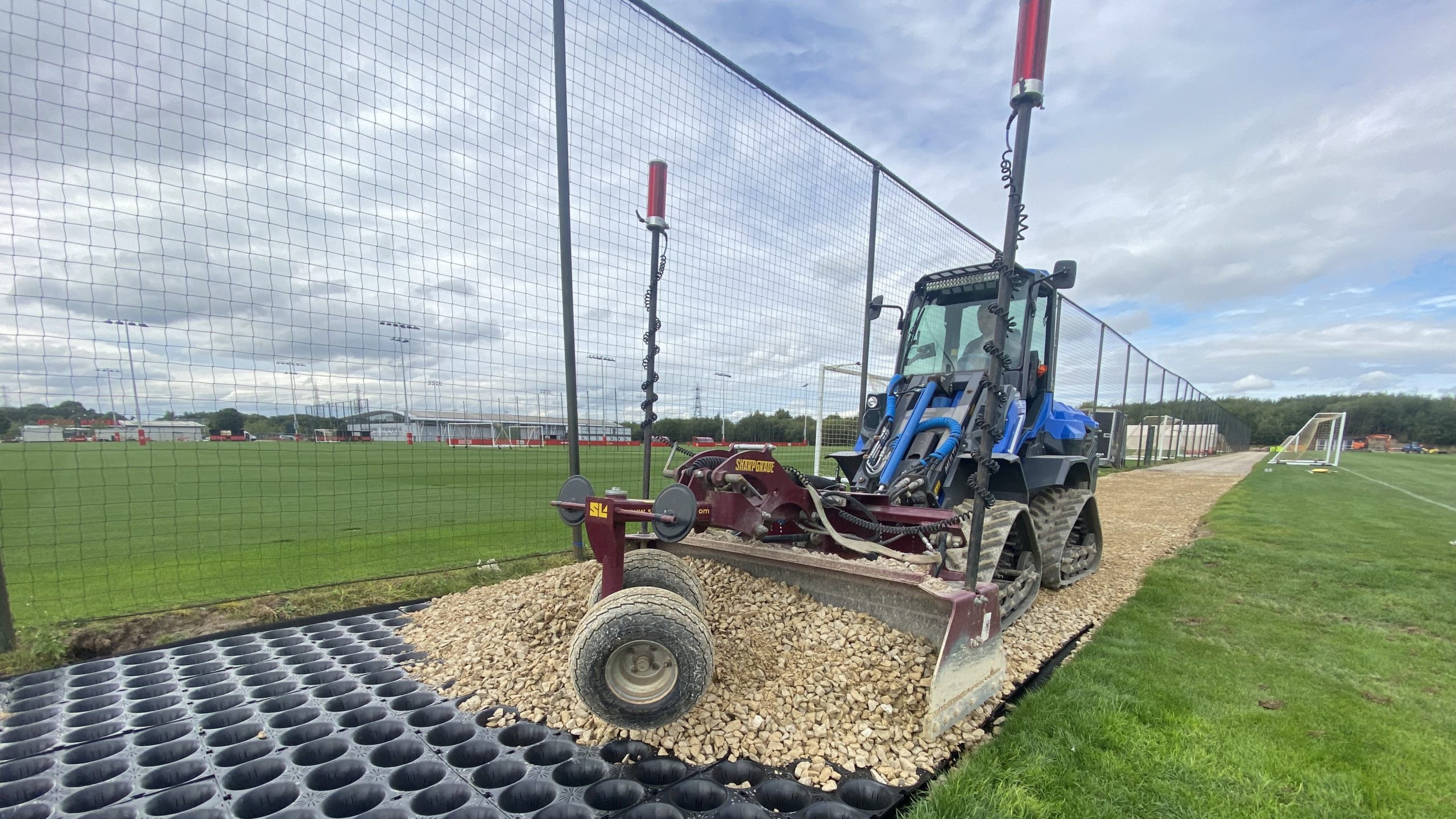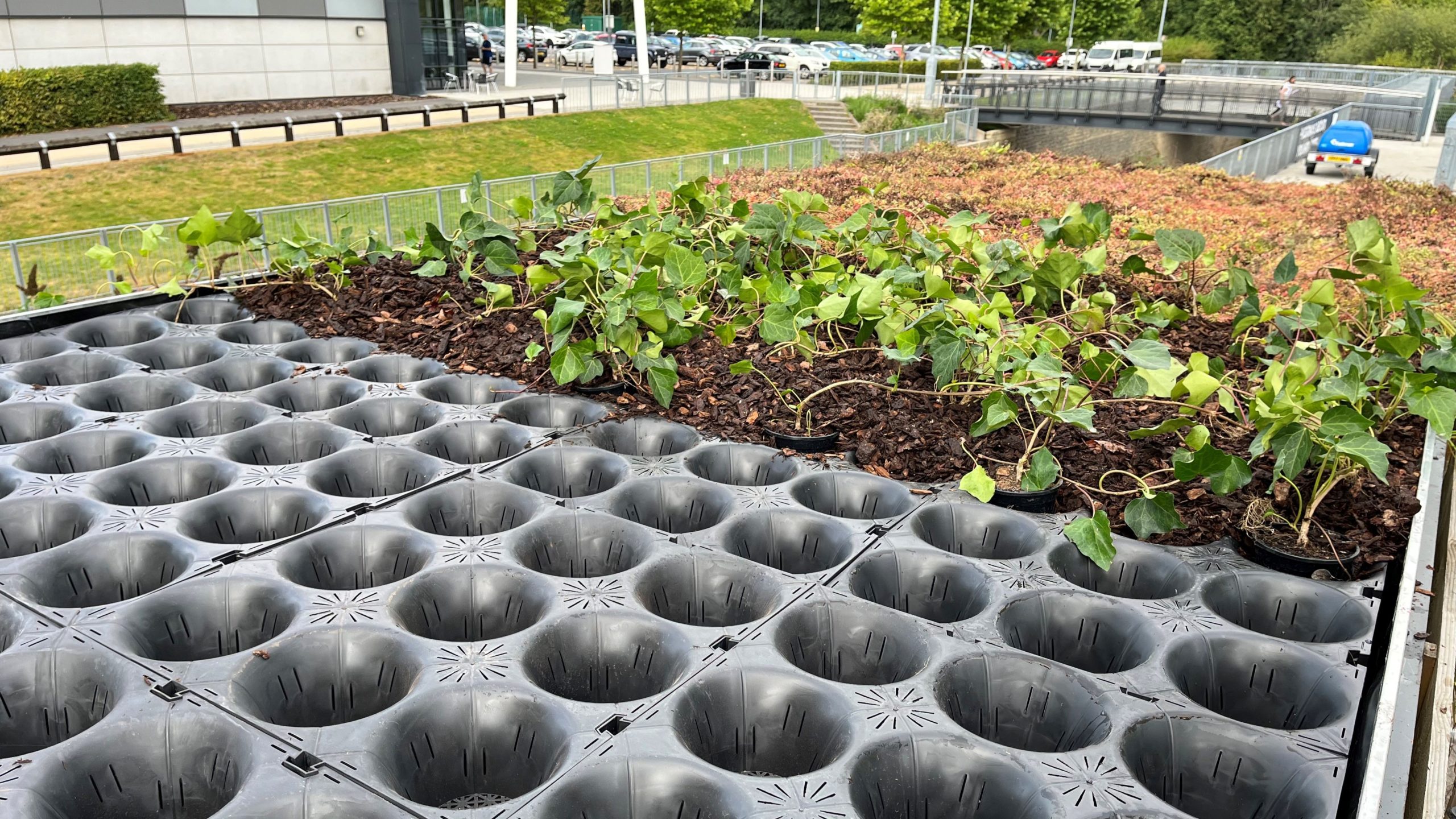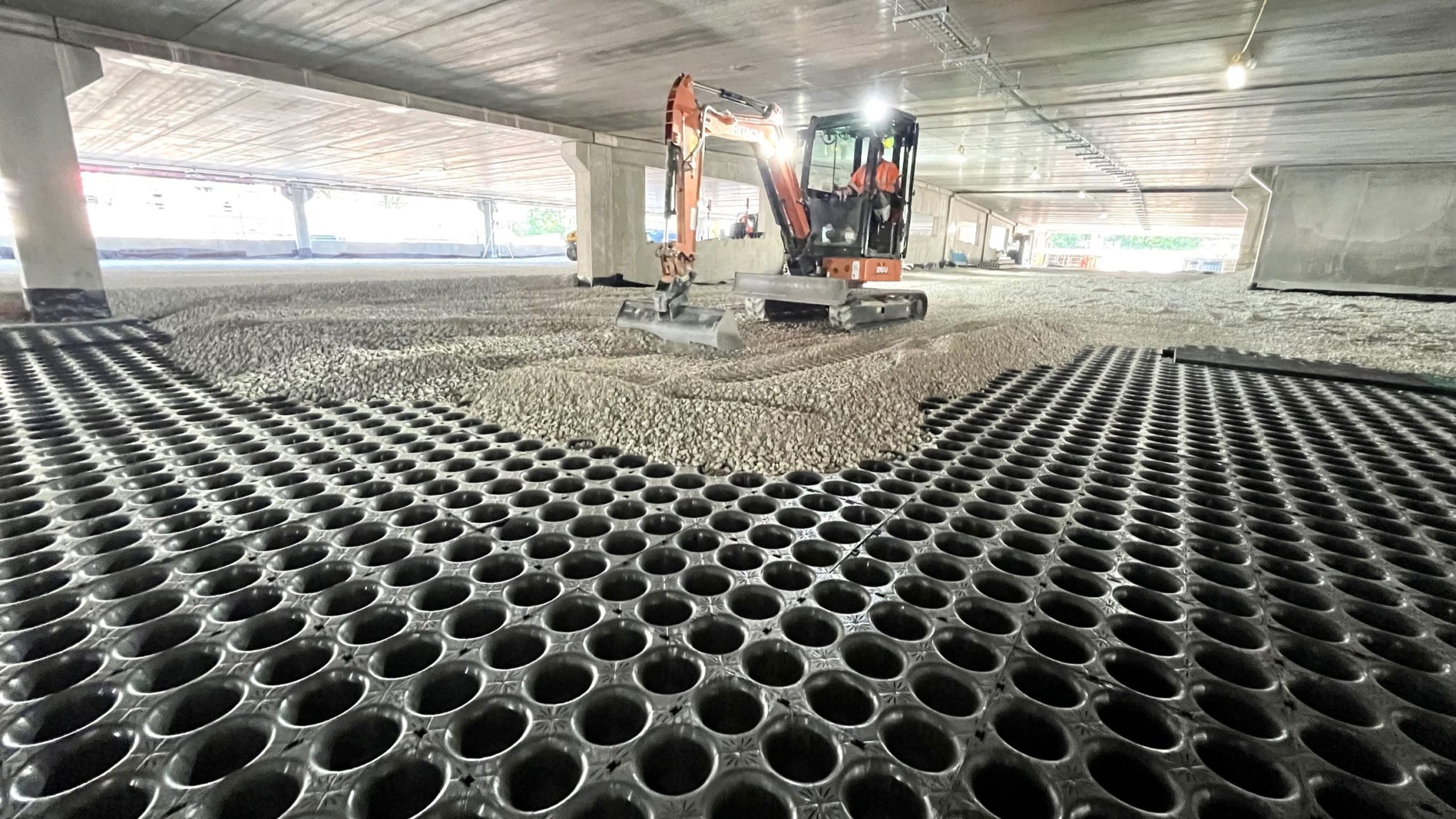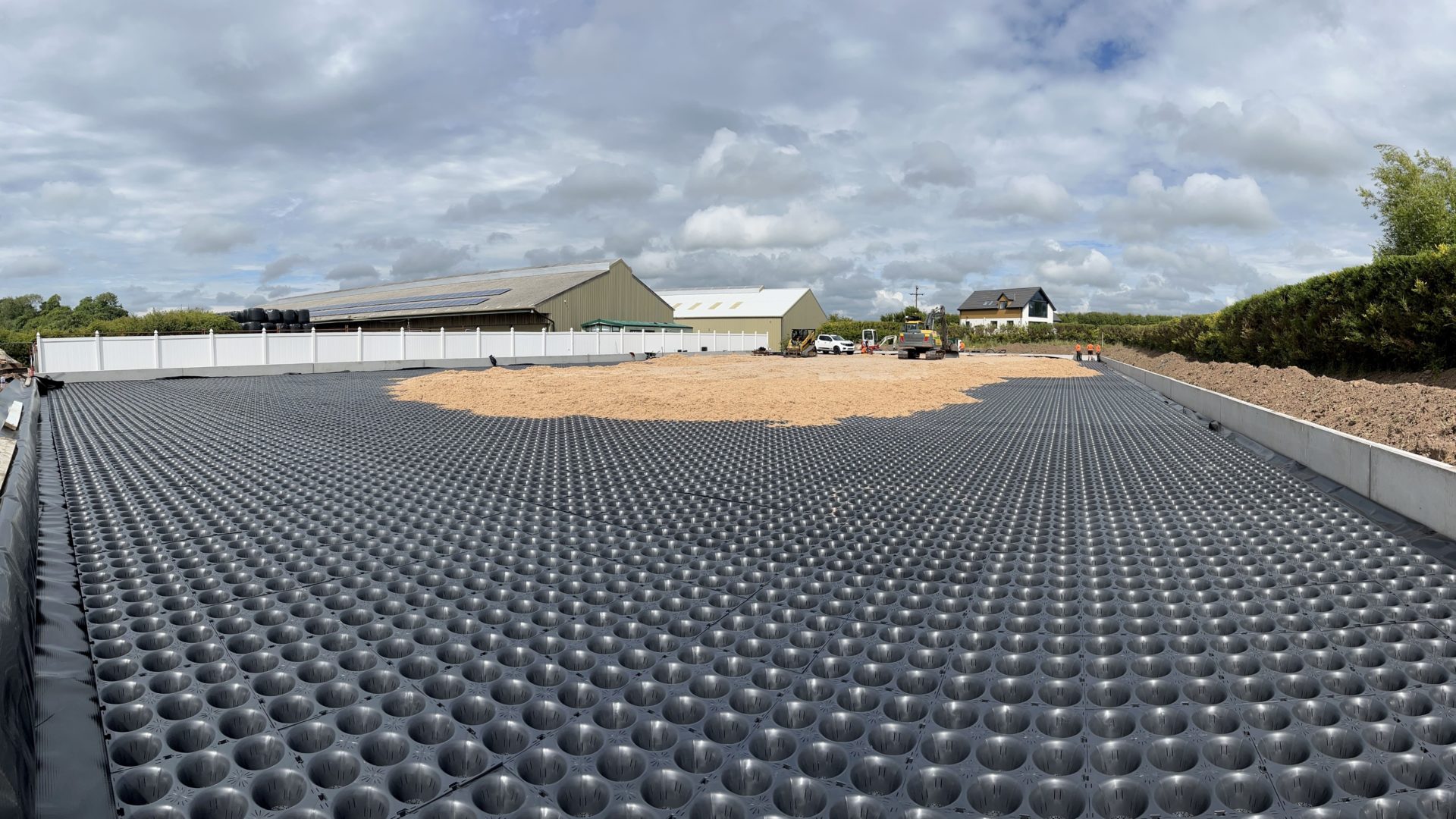Shifting weather patterns and new planning regulations are challenging thinking on SuDS design. It’s time to get attenuation out of a hole, argues Jack Shuttleworth, Director of Water Products.
Brits have a love hate relationship with the weather. We often like to think it is bad (raining and cold) when the statistics actually say it is good (warm and sunny). Of course, good and bad depends on your perspective.
Yet, there does seem to be a change in the air. Over recent times, our weather has been very much tending to become wetter.
This may impact on many people’s moods. It should also impact on our decision-making about water attenuation.
To put it plainly, if weather patterns are shifting across large parts of the UK, it makes sense to look at new ways to manage the increasing volumes of rain that will fall on and around our built environments.

New SuDS regulations
Provisional figures from the Met Office show England saw the highest rainfall in the 18 months to March 2024 since records began in 1836. Across the UK, it was the fourth wettest such period.
The average UK winter has become around 1C warmer and 15% wetter in the last century, according to analysis by Carbon Brief, with climate change accelerating the process.
Climate change is also predicted to make weather increasingly volatile, with extreme weather events, including prolonged heavy rain, throughout the year.
These are reasons why sustainable drainage systems (SuDS) are now mandatory for most new construction projects in England, bringing regulation into line with Wales and Scotland.
To comply with Schedule 3 of the Flood and Water Management Act 2010, planning authorities will not approve developments that do not have SuDS authorised by local SuDS Approval Bodies (SAB).
SABs, in turn, are being guided by engineering design agencies like Ciria, the Construction Industry Research and Information Association.
Attenuation – completing pressures
It means the design and selection of stormwater attenuation systems is going to become a more keenly considered issue from now on.
The standard approach for many sites is to dig large and deep holes for geo-cellular tanks and interceptor tanks. But these solutions are both expensive, time-consuming and often technically challenging.
They are not particularly sustainable, either, given the amount of energy consumed to dig out hundreds or thousands of tonnes of material and often transport it off site.
Nor are they well aligned with other factors influencing land development.
The government wants more use of brownfield sites, many of which are contaminated. Many of these sites have legacy drainage systems that are expensive to integrate.
As it gets wetter, water tables become higher, or can fluctuate more widely, increasing the risk of standard attenuation systems becoming compromised.
Solutions to these challenges are beginning to emerge. A central principal for many is to manage stormwater at source. This is, as close as possible to where the rain falls, in a developed subbase.
That could be a car park, under a building itself or under any other facility that needs to be drained, for example a sports field. Of course, another element could be a living roof.

A fifth pillar of SuDS
It is worth considering for a moment, the fundamental principles of SuDS. If a system is robust and aligned with all of them, it is likely to be fit for purpose. The four main pillars of SuDS are:
- Quantity – the system must manage the expected volumes of water;
- Quality – water must be fit to discharge;
- Amenity – rainwater must, where possible, be usable;
- Biodiversity – water should be used to support biodiversity.
A question to ask, is the current approach to install large tanks and interceptors in deep excavations the best way to support these pillars?
My answer is no, because I believe there should be a fifth pillar – Sustainability. SuDS are more of an urgent issue because of climate change, so attenuation systems should be sustainable, right?
Even if a large tank is installed as part of a new development, the energy and effort required will be very significant. Retrofitting tanks is going to be even more problematic.
I should declare an interest. Our company has developed and patented a subbase water attenuation systems called Formavoid, which is also manufactured in the UK.
Its plastic, interlocking trays combine with aggregate fill material to form an integral part of the subbase, close to the surface, where 70% of its structural space can fill with water.
Attenuation in a tea mug
In one recent project, a Formavoid raft able to hold 300m3 of rainwater was installed across the 3,500m2 footprint of a new 964-space multistorey car park at the North Manchester General Hospital.
The main contractor faced a common challenge often made more acute on hospital sites. The car park site was criss-crossed by in situ utility pipes and cables.
Moving these to dig a conventional tank was an engineering and logistical challenge in itself. Laying the attenuation tank over the top was so much simpler.

Also, one truckload of Formavoid is equivalent to 37 loads of aggregate. So, a vast quantity of soil could stay in the ground, and hundreds of tonnes of foundation material did not have to be transported to site.
These are just two of the most obvious advantages of super-thin attenuation rafts like these, which are barely higher than a standard tea mug.
Installation is safer, simpler, and takes less time. Bear in mind, there are offsite safety gains as well, with fewer lorries on the road, which are then less congested.
This makes capture-at-source attenuation systems demonstrably more sustainable, with a smaller carbon footprint that contributes to a contractor’s and a client’s NetZero 2050 commitment.
Building in flexibility
They also work out to be of at least comparable in cost to tank-based systems, and usually less expensive. They are also more scalable. If a site expands, the attenuation raft just expands with it.
These flat attenuation systems can be incorporated into capture-and-treat systems by laying them under block paving.
This allows contaminated water to percolate through the subbase, giving time for the hydrocarbons to be broken down naturally by microorganisms, eliminating the need for an interceptor tank.
At-source attenuation systems can also be laid under concrete and combined with baffle and weir channels to create the same effect.
They are also ideal for sports and leisure facilities where heavily used surfaces need to be maintained to a high standard. That could mean football pitches and playgrounds.
In fact, we have just installed two multi-use artificial surface games areas on Formavoid bases for two different projects, neither needing a conventional tanks.
The most recent project, at a school in Lancashire, made use of infiltration, draining directly into the strata, so needed no surface water pipe connections.
A new way of thinking
This is the preferred approach to water management according to the CIRIA SuDS manual.
To cover the final pillar, at-source attenuation systems can act as storage tanks for reusable water, or the water can be channelled into ponds, water courses or wet areas to support wildlife.
I believe these advantages mean at-source systems will also start to percolate into the ground engineering and construction industries at an even faster rate in the coming years.
But it does take time for the penny to drop. One of our most important tasks is giving CPD talks to ground engineering consultancies to explain there is another way to think about attenuation.
Many are excited by the possibilities, after first falling off their chairs when told they no longer need to install a petrol interceptor 15 metres long, five metres deep and three metres wide.
The relief is often palpable.



